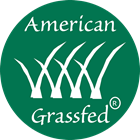by Marilyn Noble, AGA Communications Director (from the AGA producer newsletter, 5/10/12)
One of the things I like best about my job is being able to educate consumers and the media about grassfed meats and the people who commit their efforts to raising and producing them. Sometimes, though, it feels like I’m up to my hips in feedlot manure, especially when it comes to terminology and labeling.
A couple of weeks ago I read an article written by a food writer who said she doesn’t feel that the term grassfed is accurate, so from now on she’s going to refer to grassfed meat as grass-finished. In her mind, that may be more clear, but in the real world, it’s totally incorrect and does her readers a disservice. And then I read about a James Beard Award-winning chef who referred to the meat he serves as “some grassfed and some ‘grassfed and grain-finished.'” WRONG!
I don’t think either of these people is ill-intentioned or trying to deceive anyone — they simply haven’t been educated about the correct terminology. And if people in the food industry don’t know, how confused must the general public be?
That’s why it’s vitally important for anyone who raises and sells grassfed products to use uniform terminology and to educate the customer. One reason people stop buying sustainably-raised food is that they get overwhelmed and confused by all of the different labels, and it’s just easier to give up and buy a dozen factory-raised white eggs and a Styrofoam tray of ground beef. If we’re going to continue to grow into something more than a tiny niche market in the multi-billion dollar food industry, we all have to be sending the same message.
Below is a terminology primer. Feel free to copy it and add it to your website, pass it out to your customers at the farmers market, or incorporate it into your newsletter. (As always, please give AGA attribution.) If you or your processor, distributor, or customers have any questions, please don’t hesitate to email us. And if there’s any way we can help you spread the word, let us know. We’re here to support you.
